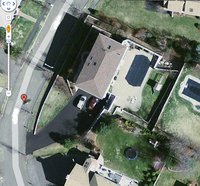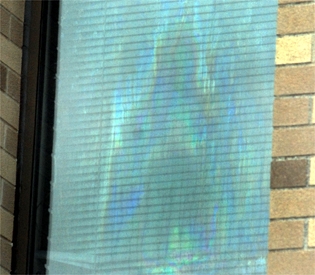The Italian web site Petrus, "the on-line daily on the pontificate of Benedict XVI", is presenting an interview with the renowned Mariologist Msgr. Rene Laurentin, who seems to be taking a surprisingly cautious stand on the Medjugorje apparitions he has promoted for over 25 years. Here's my effort at a translation. (A note of caution: I'm only beginning to study Italian this year, so there are probably some flaws here.)
Fr. Rene Laurentin takes a step backward: "I have never expressed a positive judgment on the authenticity of the Medjugorje apparitions." And a rebuke to those who want a proclamation of Mary as co-redemptrix
by Gianluca Barile
VATICAN CITY - Without a shadow of a doubt, Fr. Rene Laurentin represents one of the greatest authorities on the subject of mariology, the realm of theology that studies the figure of Our Lady and her role in the history of the salvation of man and of the world. For the past 40 years, after having been appointed an expert at the Second Vatican Council, the French clergyman has concerned himself with the principal Marian apparitions of history. In sum, a true expert, whose interview, granted exclusively to Petrus, will not fail to discuss both the Virgin's role as co-redemptrix and the alleged apparitions of Medjugorje, from which Fr. Laurentin is unexpectedly distancing himself in these very pages. But let us take one step at a time.
Father Laurentin, in the Apocalypse of John, Mary prevails over the Dragon. Can we say, therefore, that next to the Holy Trinity, the Madonna is Satan's most feared adversary?
"Chapter 12 of the Apocalypse is indeed the principal theological point that sets the Virgin and the Dragon in opposition, but already Genesis (3:15) says that the Woman, that is to say, Mary, will strike with her own heel at the seed of the devil. Furthermore, that the Madonna is the most feared adversary of Satan, next to the Trinity, is completely confirmed by exorcists and by Christian experience."
In that regard, the greatest exorcists have been able to verify how the infernal spirits are stricken with terror when they hear the name of the Virgin pronounced and many of them even seem to bear respect to Her, calling her "the Lady": can we affirm that she has received a sort of specific "mandate" on the part of God against evil?
"Very simply, as I was mentioning before, the Virgin is the enemy of the devil. And this is not because she received a specific mandate, but already through her Immaculate Conception. So to speak, the Madonna has been terrifying the evil one ever since she came into the world."
In practically all the Marian apparitions, the Virgin exhorts us to the steady, daily, recitation of the Holy Rosary, declaring this pious practice the most powerful weapon against Satan. As a mariologist, do you consider the Holy Rosary more a Marian prayer or a Christological one?
"Christ and Mary are together only one thing: there is no dilemma! I don't like the word "Marian", because it has a specialist flavor and would have made the Virgin Mary laugh when she was walking to the well."
Has Mary been made co-redemptrix of the world with her Son Jesus? In the Church one can't speak of timing, but the hour doesn't seem to have arrived for the proclamation of a dogma, although it has been requested by some initiatives and with the insistence of many bishops and cardinals (in particular) of Latin America. Don't you think so?
"For 50 years I've been studying the role of Mary in the Redemption of the world. And from the beginning I have thought how unique this participation is. In any case, the title of co-redemptrix is ambiguous, often misunderstood, and in addition conflictual from a theological and ecumenical point of view. This is why I personally am against the definition of Mary co-redemptrix and I think those people who sign petitions, without knowing what they are doing, for the definition of a dogma ad hoc, would do better, seriously, to go deeper into the role of Mary in the Redemption. An important role, most important, but not comparable to the unique role of Jesus."
In the "Salve Regina", we call the Madonna "our advocate": what role will the Virgin have when we find ourselves before the judgment of God? Will her judgment count toward the salvation of our souls? That is, will she be able to intercede before Jesus to alleviate our Purgatory?
"Mary is our mother: she loves, sustains, and defends her children. This is called intercession, but it would be mistaken to represent the Madonna in a naive way, occupied in a dialogue during which she takes our defense against God and against Christ, as some bad literature of the fifteenth and sixteenth centuries portrayed. The action of Mary in relation to God is a heart-to-heart, in identification with the love to which she has arrived and which draws us. So there is no need for the Madonna to defend us before God, because He is not a wicked judge and, as Jesus already said in the Gospel (John 5:22), "the Father judges no one". Furthermore, let us not forget that the Trinitarian function of God is even more maternal than paternal. Let's read John 1:18: the Son is in the bosom of the Father."
It is the 150th anniversary of the apparitions of Lourdes, but aren't there other ones officially recognized by the Church (for example, Fatima). What does the Virgin want to communicate to us?
"For one thing, we recall that only 13 apparitions of Mary have been officially recognized, while a fourteenth has been accepted pastorally but not canonically by the bishop of San Nicolas in Argentina. Having said that, in regard to the messages, they are various, but at the same time, unanimous, inasmuch as they represent the simple echo of the Gospel and invite us to prayer, to conversion, to penance, to fasting, to the reading of the Bible, in various ways according to the times and the prophetic relevance of each individual message but without ever going beyond what is the doctrine of the Church."
You are a supporter of the apparitions of Medjugorje, whereas many other prominent mariologists are skeptics. In your opinion, when will the Church declare herself on these manifestations? And, in the Vatican, why do they not appear to be convinced of the authenticity of the Medjugorje apparitions...
"At Medjugorje, the bishop is against the apparitions and his predecessor chose him precisely for that reason. Naturally, as everyone knows, the Holy See always takes the position of the local bishop as its own in such cases. Anyway, Cardinal Ratzinger had refuted the negative judgment of Bishop Zanic (in 1986), the first bishop in a position to confront the question of the apparitions. I am only an expert and I have no magisterium. And I never allow myself to give an opinion on the apparitions which I study. I only examine the facts, the reasons in favor and those against. I discern them, I explain them as clearly as possible, but I don't give any judgment. If I had done that, I would have made greater difficulties for myself, which are already great enough, from the moment I involve myself so assiduously in this controversial phenomenon."
Father Laurentin, what you are saying seems to be a step backward: you have written books upholding the thesis of the authenticity of the apparitions of Medjugorje...
"I say it again: I have never expressed judgments on the authenticity, at least of the apparitions; my studies are merely a small contribution to the Church and to the faithful..."
Staying with Medjugorje: particularly in that place, but also in other parts of the world, many Catholics put Mary before Christ. Many of the clergy do the same, in whose churches the presence of images of the Virgin predominates over those of the Crucified even on the facade of the rectory. Don't you believe that the Madonna herself is not happy with all this?
"I think that the problem is the opposite of what you describe: Mary has become more undervalued than appreciated. Let's try to think of all the Catholics who do not appreciate or recognize her as their mother."
Father Laurentin, in conclusion, who should Mary be for us and who are we for her?
"I don't like to repeat myself, but Mary is our Mother and our Queen: 'More mother than queen', St. Therese of Lisieux used to say, and rightly so. And as a consequence, we are 'simply' the children of the best, the most holy, and the most marvelous of mothers."
(Thanks to Gianluca Barile for the permission to share his interview here, and a hat tip to Mark Waterinckx and kreuz.net for alerting me to it.)

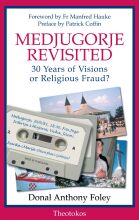 I finished reading religion writer Donal Foley's updated book on the Medjugorje phenomenon today; it's called Medjugorje Revisited and I recommend it to everyone concerned about the affair.
I finished reading religion writer Donal Foley's updated book on the Medjugorje phenomenon today; it's called Medjugorje Revisited and I recommend it to everyone concerned about the affair.
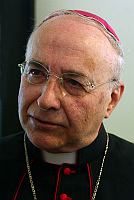 VATICAN CITY - A mixture of economic and diabolical interests, with the alleged seers and their collaborators directly involved in profits related to the increased flow of pilgrimages and visits in the area, and the Evil One well content to sow discord between the faithful most convinced of the validity of the apparitions of Medjugorje and the Church, sceptical as ever in the face of what she has declared more than once, through the words of two successive bishops of Mostar during that time, "a great deception". Monsignor Andrea Gemma, former bishop of Isernia-Venafro [served 1990-2006], among the greatest exorcists living, does not mince his words: instead of the Virgin, so far only rivers of money have appeared at Medjugorje, a grave accusation that sums up not only the courage but also the moral and spiritual capacity of the prelate who agreed to respond to questions from "Petrus" on such a prickly event.
VATICAN CITY - A mixture of economic and diabolical interests, with the alleged seers and their collaborators directly involved in profits related to the increased flow of pilgrimages and visits in the area, and the Evil One well content to sow discord between the faithful most convinced of the validity of the apparitions of Medjugorje and the Church, sceptical as ever in the face of what she has declared more than once, through the words of two successive bishops of Mostar during that time, "a great deception". Monsignor Andrea Gemma, former bishop of Isernia-Venafro [served 1990-2006], among the greatest exorcists living, does not mince his words: instead of the Virgin, so far only rivers of money have appeared at Medjugorje, a grave accusation that sums up not only the courage but also the moral and spiritual capacity of the prelate who agreed to respond to questions from "Petrus" on such a prickly event.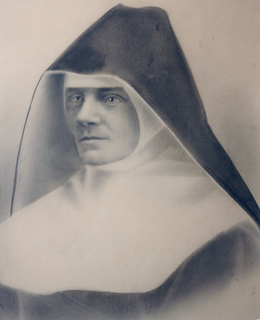 Today, the bishop announced his verdict: the event is confirmed to be of supernatural origin, and the faithful are free to believe in the apparition.
Today, the bishop announced his verdict: the event is confirmed to be of supernatural origin, and the faithful are free to believe in the apparition. 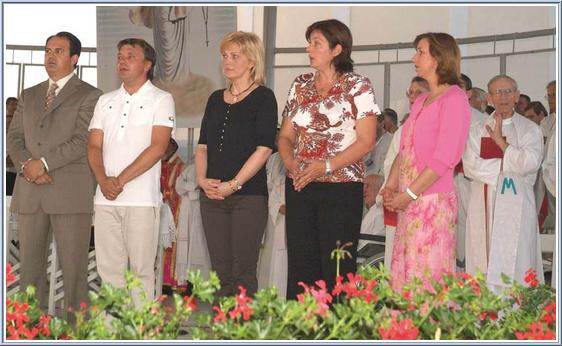
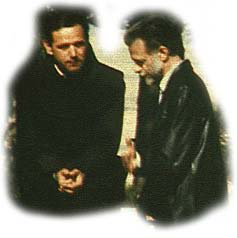 when an American woman came to him and told him that Zovko had sexually assaulted her. Waterinckx went to Zovko the next day, and Zovko denied everything but was pale and in a terrible state. The incident precipitated a crisis of faith for Waterinckx, who had a conversion experience at San Damiano, which he now doubts. After praying in front of the Blessed Sacrament, Waterinckx decided to walk barefoot to Tihalijna to try to get to the bottom of the matter. When he arrived in Tihalijna, Zovko had regained his composure; he laughed at Waterinckx in spite of the fact that he had severe burns on his feet. Since that time, Zovko has pretended that he doesn't know Waterinckx.
when an American woman came to him and told him that Zovko had sexually assaulted her. Waterinckx went to Zovko the next day, and Zovko denied everything but was pale and in a terrible state. The incident precipitated a crisis of faith for Waterinckx, who had a conversion experience at San Damiano, which he now doubts. After praying in front of the Blessed Sacrament, Waterinckx decided to walk barefoot to Tihalijna to try to get to the bottom of the matter. When he arrived in Tihalijna, Zovko had regained his composure; he laughed at Waterinckx in spite of the fact that he had severe burns on his feet. Since that time, Zovko has pretended that he doesn't know Waterinckx.
 The Italian weekly magazine
The Italian weekly magazine 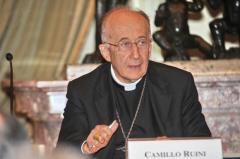
 For years there has been a contentious debate about the so-called "Marian apparitions" of the seers who originated from Medjugorje. The current official position of the Church is still the
For years there has been a contentious debate about the so-called "Marian apparitions" of the seers who originated from Medjugorje. The current official position of the Church is still the  (Translated from the German-language Catholic newspaper
(Translated from the German-language Catholic newspaper 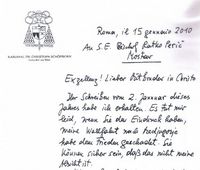
 From the Italian web site
From the Italian web site 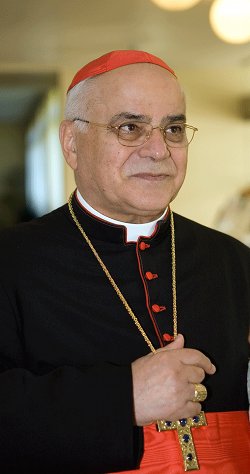 The Italian Catholic website Petrus has published an interview with the former prefect of the Congregation for the Causes of Saints, José Cardinal Saraiva Martins. Cardinal Saraiva has joined in the public debate about the alleged apparitions at Medjugorje in Herzegovina by expressing his own skeptical take on the phenomenon. Here's a translation of
The Italian Catholic website Petrus has published an interview with the former prefect of the Congregation for the Causes of Saints, José Cardinal Saraiva Martins. Cardinal Saraiva has joined in the public debate about the alleged apparitions at Medjugorje in Herzegovina by expressing his own skeptical take on the phenomenon. Here's a translation of 